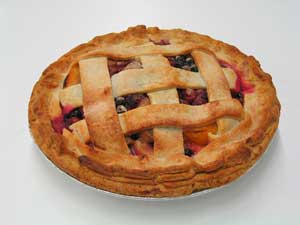Lard
 |
Lard
was once used instead of butter due to its low cost and long shelf
life. It is still used widely throughout the world for baking and rich,
flavorful foods.
|
Lard is made of rendered and clarified pork fat, which means high cholesterol content, but no trans fatty acids.
Varieties
The quality of lard varies depending on the part of the pig from which it was rendered. The lowest grade is from the intestine area, while the best is from around the kidneys (called “leaf” lard). Any yield from along the back is nearly as good.
In some regions, lard is available either unprocessed or processed (for a longer shelf life).
Buying Tips
In many countries, lard is readily available at any market. In the it may be more difficult to find. However, some grocery stores carry packaged pork fat, which can be rendered over heat and kept for several weeks in the refrigerator.
Storage Tips
Canned lard, once opened, can become rancid if not tightly sealed, kept cool, and stored away from sunlight.
Usage Tips
• Tough and dry meat cuts can be injected with strips of pork fat – called “lardons” - in a process called “larding.”
• Lard is sometimes stored in salt to retain quality and blanching may be required. Bring lard and water to a boil then quickly remove and place under running water until cool.
• Add to soups and stews or when boiling vegetables for rich flavor.
Substitution Tips
• Equal amounts of vegetable oil or shortening.
• Butter (for better flavor), increased by one-quarter of required amount.
Try one of our favorite lard recipes:
Biscotti
Rich Pastry Crust
Refried Beans





